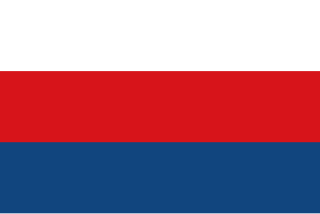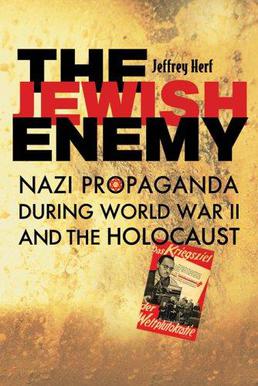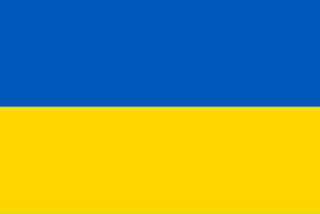The Aryan race is a pseudoscientific historical race concept that emerged in the late-19th century to describe people who descend from the Proto-Indo-Europeans as a racial grouping. The terminology derives from the historical usage of Aryan, used by modern Indo-Iranians as an epithet of "noble". Anthropological, historical, and archaeological evidence does not support the validity of this concept.

David Frawley, also known as Vamadeva Shastri, is an American Hindu writer, astrologer, acharya, ayurvedic practitioner, and Hindutva activist.

The Protectorate of Bohemia and Moravia was a partially-annexed territory of Nazi Germany that was established on 16 March 1939 after the German occupation of the Czech lands. The protectorate's population was mostly ethnic Czech.

A Reichsgau was an administrative subdivision created in a number of areas annexed by Nazi Germany between 1938 and 1945.
Karl Wolfgang Deutsch was a Czech social and political scientist. He was a professor at MIT, Yale University and Harvard University, as well as Director of WZB Berlin Social Science Center.

Jan Kubiš was a Czech soldier, one of a team of Czechoslovak British-trained paratroopers sent to eliminate acting Reichsprotektor (Realm-Protector) of Bohemia and Moravia, SS-Obergruppenführer Reinhard Heydrich, in 1942 as part of Operation Anthropoid. During the assassination attempt, Kubiš threw a makeshift grenade that mortally wounded Heydrich.

Karl Hermann Frank was a Sudeten German Nazi official in the Protectorate of Bohemia and Moravia prior to and during World War II. Attaining the rank of Obergruppenführer, he was in command of the Nazi police apparatus in the protectorate, including the Gestapo, the SD, and the Kripo. After the war, he was tried, convicted and executed by hanging for his role in organizing the massacres of the people of the Czech villages of Lidice and Ležáky.

Emanuel Moravec was a Czech army officer and writer who served as the collaborationist Minister of Education of the Protectorate of Bohemia and Moravia between 1942 and 1945. He was also chair of the Board of Trustees for the Education of Youth, a fascist youth organisation in the protectorate.

Claudia Ann Koonz is an American historian of Nazi Germany. Koonz's critique of the role of women during the Nazi era, from a feminist perspective, has become a subject of much debate and research in itself. She is a recipient of the PEN New England Award, and a National Book Award finalist. Koonz has appeared on the podcasts Holocaust, hosted by University of California Television, and Real Dictators, hosted by Paul McGann. In the months before the 2020 United States presidential election, Koonz wrote about the risks of autocracy in the United States for History News Network and the New School's Public Seminar.

The Jewish Enemy: Nazi Propaganda During World War II and the Holocaust is a 2006 book by University of Maryland professor Jeffrey Herf, in which the author postulates that the Nazi government maintained its hold on the German people by controlling the press and claiming that Germans were already being attacked by an international Jewish conspiracy. Herf offers in the book a thorough study of the propaganda material disseminated by the National Socialist regime.
Censorship in the Czech Republic had been highly active until 17 November 1989 and the fall of Communism in the former Czechoslovakia. Czech Republic was ranked as the 13th most free country in the World Press Freedom Index in 2014.
Chad Bryant is an American historian of central and eastern Europe, especially the Czech lands. He is a Professor of History at the University of North Carolina at Chapel Hill.
This is a select bibliography of post-World War II English-language books and journal articles about Stalinism and the Stalinist era of Soviet history. Book entries have references to journal reviews about them when helpful and available. Additional bibliographies can be found in many of the book-length works listed below.
This is a select bibliography of English language books and journal articles about the post-Stalinist era of Soviet history. A brief selection of English translations of primary sources is included. The sections "General surveys" and "Biographies" contain books; other sections contain both books and journal articles. Book entries have references to journal articles and reviews about them when helpful. Additional bibliographies can be found in many of the book-length works listed below; see Further reading for several book and chapter-length bibliographies. The External links section contains entries for publicly available select bibliographies from universities.
National indifference is the status of lacking a strong and consistent national identity. The concept was originated by scholars of the Bohemian lands, where many inhabitants historically resisted classification as either Czechs or Germans, around 2000. It was outlined by Tara Zahra in her 2010 paper published in Slavic Review, "Imagined Noncommunities: National Indifference as a Category of Analysis". In 2016, an academic conference was held in Prague to discuss the concept.

This is a select bibliography of English-language books and journal articles about the history of Ukraine. Book entries have references to journal reviews about them when helpful and available. Additional bibliographies can be found in many of the book-length works listed below. See the bibliography section for several additional book and chapter-length bibliographies from academic publishers and online bibliographies from historical associations and academic institutions.
This is a select bibliography of English language books and journal articles about the history of Poland. A brief selection of English translations of primary sources is included. Book entries have references to journal articles and reviews about them when helpful. Additional bibliographies can be found in many of the book-length works listed below; see Further reading for several book and chapter-length bibliographies. The External links section contains entries for publicly available select bibliographies from universities and national libraries. This bibliography specifically excludes non-history related works and self-published books.
This is a select bibliography of English language books and journal articles about the history of Poland during World War II. A brief selection of English translations of primary sources is included. Book entries have references to journal articles and reviews about them when helpful. Additional bibliographies can be found in many of the book-length works listed below; see Further Reading for several book and chapter-length bibliographies. The External Links section contains entries for publicly available select bibliographies from universities. This bibliography specifically excludes non-history related works and self-published books.

Marianne "Mausi" Grant was a Czech-Scottish Jewish artist, who survived the Holocaust after being imprisoned in three successive concentration camps. Grant was born during the interwar period and came from a prosperous family. From a young age, Grant loved drawing and painting but her plans to study art at university were stymied after the invasion of Czechoslovakia in March 1939 by Nazi Germany. In June 1939, the Nuremberg racial laws were implemented and Grant and her family faced increasingly stringent restrictions that lead them to be interred at a camp in Prague and then later deported to the Theresienstadt Ghetto in May 1942. Grant spent 18 months in the ghetto before being transferred to Auschwitz concentration camp. In Auschwitz, Grant used her painting skills in exchange for food and medicine and to make the children's block where she worked, more homely. However, her work come to the notice of Josef Mengele, who used Grant to paint family trees of dwarfs and twins. After 7 months, Grant was sent to forced labour battalion and later Bergen-Belsen concentration camp. When she was liberated, she was sent to Sweden to recuperate and met her future husband. They married and settled in Glasgow. After the war, she finished her education at the Glasgow School of Art. In 2002, Grant's paintings and drawings were exhibited at Kelvingrove Art Gallery and Museum. 22 members of Grant's family died in the Holocaust.

History and the Culture of Nationalism in Algeria is a book by James McDougall published originally by Cambridge University Press in 2006. It is part of the Cambridge Middle East Studies Series. The book is an analysis of how the Algerian nationalist narrative was created and developed in popular memory. The author pays particular attention to the role the Association of Muslim Scholars and Ahmad Tawfiq al-Madani played in the development of the nationalist narrative.











